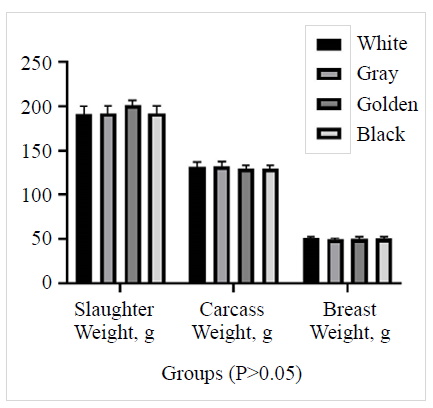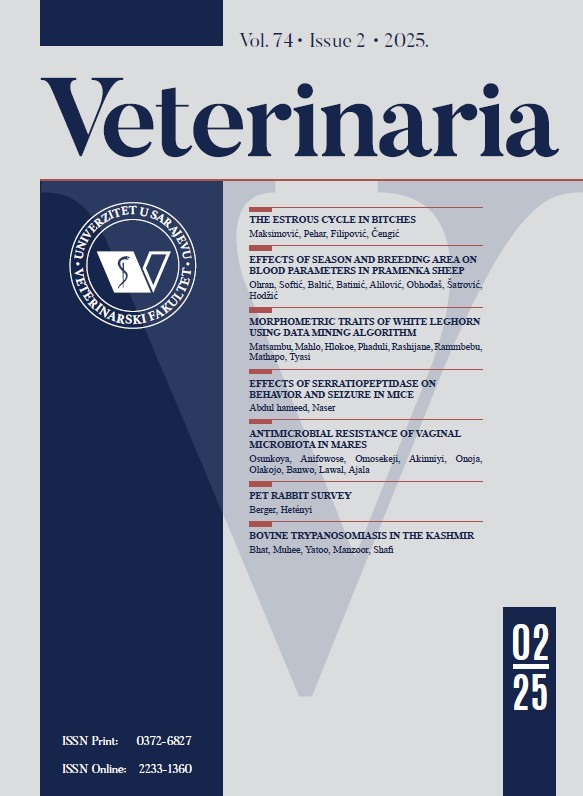Quality properties and fatty acids composition of breast meat from Japanese quails with different varieties grown under warm climate
DOI:
https://doi.org/10.51607/22331360.2023.72.2.163Keywords:
Fatty acids, meat quality characteristics, quail varieties, warm climateAbstract
As climate change is expected to worsen in the future, raising livestock animals used in meat production with maximum efficiency in warm climate conditions may become a necessity to meet food needs. To this end, the experiment was carried out to determine the quality properties of breast meat from different colored Japanese quails (Coturnix coturnix Japonica) grown under the warm climate conditions. A total of 100 quails were used, with 25 each of black, white, golden, and gray. After the quails were grown under the warm climate conditions from the 15th-42nd Day, they were slaughtered, and the chemical-physicochemical properties, along with the fatty acid composition of the breast muscles, were determined. The values of b* (yellowness) were significantly lower in the black quails (P<0.01). The lowest fat content of meat was determined in black and gray quails, and the highest fat content was determined in white quails (P<0.001). The proportion of total saturated fatty acids was the highest in the gray quails, and total monounsaturated fatty acids were found to be the highest in the golden and the lowest in the gray quails (P<0.05). The highest proportion of n-3 polyunsaturated fatty acids was detected in gray quails and the lowest in golden and white quails (P<0.01). The white and golden quails had the highest n-6: n-3 proportions, while the gray quails had the lowest (P<0.01). This study concluded that quail varieties had distinct traits that arise due to varying environmental circumstances. Quail varieties growing in warm climates may have different meat quality parameters.

Downloads
Published
How to Cite
Issue
Section
License
Copyright (c) 2023 Gülsah Güngören, Alper Güngören, Ü. Gülcihan Şimşek, Ökkeş Yilmaz, Muammer Bahşi, Sultan Aslan

This work is licensed under a Creative Commons Attribution 4.0 International License.







